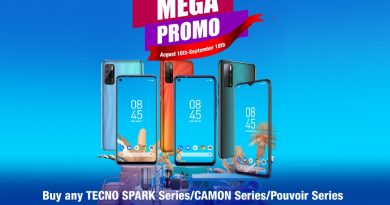Using UX Design to Promote Content Consumption
Every piece of content that is put out into the world has an experience around it. That’s what we call a content experience.
If you’re using content in any marketing strategy—demand generation, inbound, ABM, sales enablement, or even something totally different—optimizing the experience optimizes your results. That said, marketers aren’t always presenting their content in a way that promotes a great experience for the end user. If you’re a modern marketer, you already know experience is important.
And if content is a crucial part of your strategy, you likely know that focusing on your content experience drives revenue. If you don’t, we’ve got the data to prove it.
User Experience Meets Content Experience
But what role does user experience play in content experience? In a previous life I studied how humans interact with technology and one of my focuses was on user experience (UX) design. The Interaction Design Foundation calls UX design “the process design teams use to create products that provide meaningful and relevant experience to users.” You’ll notice the focus on “users.”
On that note, UX designers aren’t necessarily interested in moving someone through the buyer journey, although a lot of good design principles can absolutely apply to a content experience created for that purpose.
It took me a year and a half of working for Uberflip and talking to marketers about their content experience to really understand the connection: UX design is an integral part of any marketer’s content experience.
In this article, I’m going to share with you five ways that you can design your user experiences—and thus your content experiences—to promote binge consumption and, ultimately, to accelerate the buyer journey for your future customers.
1. Use Robust Navigation to Promote Self-Nurturing
If your future customers don’t know where they are on your site, they definitely won’t be able to navigate to the content that is right for them. That’s where the design concept “placemaking” comes in. Placemaking is the concept that you design to help users locate where they are in a web experience.
If someone is lost on your site, you can guarantee they’re bouncing. You can keep your future customers feeling confident in a number of ways with proper navigation. A good global navigation—the top-level nav on your page—ensures that someone who arrives on your site can find their way around quite easily.
If they make their way to your resources section, another content-focused navigation is a great way to help your future customers continue their browsing.
Dropdown menus allow buyers to identify what they’re looking for so that they can consume content on their own; this encourages self-nurturing. If more content read means a faster trip through the funnel, this reduces the number of touchpoints you need to acquire a customer.
When designing menus, you want to make sure that you’re making it easy to recognize things.
The cognitive psychologist George A. Miller published a famous paper on the limits of short-term memory. He suggested that the average person could recall somewhere around seven things at a given time. Why do you think our phone numbers have seven digits after the area code?
Make sure your menus aren’t overwhelming for your future customers and make them easy to navigate so that people don’t have to remember everything about your navigation. I suggest maxing out at seven different dropdowns within your resources section. That’s enough to segment by persona, business, type, challenge, goal, industry, and geography.
You want to be able to help someone find information in the way they’re thinking about themselves or their challenges, and you want it to be easy. In short, design for recognition rather than recall.
Supplemental navigation elements are crucial as well. These are ways to navigate your site that provide overviews of the site as a whole or direct links to specific locations. Think sitemaps, indexes, or search bars. These are alternative methods for your future customers to find what they’re looking for.
If you’d like to test your navigation, here’s a great navigation stress test you can check out. Obviously this only applies to people who are browsing your site freely. See my tip #3, below, for more on constrained experiences where you get rid of the navigation completely.
2. Create Non-Linear Experiences To Reflect a New Buyer’s Journey
A lot of marketers think about the buyer journey as a linear path. Read one piece of content, then the next, then the next. Slowly progress in a linear fashion until you reach the bottom of the funnel in that nurture program, talk to sales, and then BOOM, customer.
We know that’s not how people consume information. Marcia Bates, a professor at UCLA, came up with a model that I think fits better: the berrypicking model of information retrieval.
What Bates says is that instead of going in that linear fashion, people search the web in the same way you might pick berries. You arrive at the farm, stroll around, find a berry you like, and pick it. Then you go to another berry and it might not look so appetizing, so you go back to the first berry and start looking for similar berries. Bates proposes that people make a query, have a thought, exit, then keep doing that, picking up information, documents, and other content along the way.
If people are looking for information in a non-linear fashion, marketers need to serve up content in ways that will accommodate this. That’s why most go-to-market strategies require content in some form.
There are real challenges here. First, ensure that once you have someone’s attention you hold onto it. That means contextual and intelligent recommendations that will keep your future customers engaged with your brand rather than your competitors’.
Second, use content in different formats. Robust navigation (point #1) allows your customers to self-select their topics of interest. If it’s a hidden campaign experience, you probably don’t want to have a menu there. If you really know an account well and you’re sure your content will appeal to them, you could create a closed and hidden experience that doesn’t allow your future customer to find other content. This leads to point #3.
3. Keep Buyers Engaged in a Contained Experience
Traditionally, many marketers believe that best practice in landing page creation is to have nothing but a focused CTA and to remove all distractions that might stop a prospect from converting. Since buyers are soon ready to move to another berry or, in this case, to bounce to another website, you need to provide alternatives to engage them.
This might seem like it goes against a lot of demand gen principles where you take your customers on a closed journey and dictate the actions that the buyer takes in order to move through the funnel.
Well, it’s possible to keep your buyers engaged and create a closed experience for them using the design principle of constraints. Constraints limit user interactions in order to provide focus. In this case, you can select content relevant to a specific audience or account and direct that audience or account to a curated content experience.
Let’s say you select five pieces of content that you know will resonate with the decision makers at your number one target account. You can design a content experience that only includes those five pieces of content and create constraints to promote conversion by eliminating elements like your global navigation, other menu structures, and breadcrumbs.
When your buyer only has the choice to convert or bounce, they might bounce. When they have the choice to convert or read alternative content, while being constrained by your design, they’re more likely to stay engaged and convert while still moving through your demand gen pathways.
This method helps to cater to digital natives who are wise to the conversion tactics commonly used a few years ago.
4. Ensure Your Buyers Know What to Do
Do you ever push a door only to realize you should have pulled? That’s an example of affordance gone wrong. Affordance is the attribute of an object/webpage that lets someone know how to use it. Take a blank white form field on a CTA. It lets users know that they can fill out that blank space with information.
So how do you create affordance with your customers?
For one thing, consistency is a priority. You want your content experiences to align with your brand and with the areas of your website that don’t have content. If someone goes from one area of your web property to another and your brand changes, it’s confusing.
You also want to make sure that content pop-ups create obvious interactions. Pop-up widgets and content that appears on exit intent are effective tools that need proper execution.
If something is popping up, users expect to interact with it, so putting in extra care to make it obvious how to interact is key. You can do this by utilizing symbols that have universal meanings, such as arrows or Xs; when someone sees an arrow they likely infer something from its direction and when they see an X they likely infer that clicking it means closing the page.
Front-end development work can also go along way towards creating affordance. Hover effects are excellent indicators that users can interact with an element. Styling in different colours or using contrast also lets users know that buttons are clickable.
Asking yourself, “Will people know how to use this?” can be useful in thinking about your gated assets. If someone fills out a form to get your latest white paper, it should be obvious what happens next. If they’re opening the document in a new window or downloading the asset to their desktop, you should label those actions appropriately.
Better yet, if you can get this information into the design of the page, you can create true affordance.
Our customers at Uberflip use overlay CTAs to gate content. One of the strengths of this method is that the user can see the asset behind the CTA (like the example below).
The design affords prospects the knowledge that once they convert on the asset, they’ll stay on the page to consume the content rather than having to check their emails, navigate away from a thank-you page, or jump onto a PDF. This approach eliminates the unknowns that can come up when someone converts on a traditional landing page and increases conversion rates by a whopping 7x.
5. Be Contextual in Your Design
UX design is all about context. When designing for users and for businesses, considering the reasons a webpage or a piece of content exists allows you to create meaningful context for that webpage or content.
Forrester’s B2B Content Marketing Platform Wave weighted the Activation category most heavily this year and activation is all about context. Context is what puts your content to work and transforms it into a great business driver. By presenting your content in the right context, you activate it to drive your buyers to read more content.
Designing for context is difficult. Your content marketing team has worked hard on a great piece of content and you want to get it live fast. The challenge is ensuring that it’s being utilized in experiences that are relevant to your future customers.
In order to do that, you’ve got to understand the purpose of the content and you’ve got to understand your customer. This involves deep research into how your content is currently resonating with your different segments.
When you have analytics on content performance, you can start using that data to drive your content creation and put that content into the world in context.
What is crucial here is that great content doesn’t have to live in one location. In fact, the different segments of your audience probably have areas of interest that overlap.
Great content can and should be reused. If content is living in only one location in one context, that’s a waste. When you have data to show which content resonates and where it works, you can put that content in multiple experiences and see exponential results.
Aligning User Experience and Marketing
Use experience is a crucial aspect of content experience and marketing overall. Simply put, the easier and more intuitive your content is to access, the more content your target market will read. The more they read your content, the quicker they’ll move through their buyer journey.
One challenge is that, in most organizations, UX designers are much more aligned with product teams than marketing departments. But, as you can see, marketing has much to gain from user experience design.
So are your marketing and design teams aligned? If not, now is the perfect time to sit down with your teams and chat about how UX design and marketing can align to better serve your future and current customers.
Author: Kevin Jacobs, Uberflip.
This article was originally posted by Uberflip. To view the original, Click Here.





